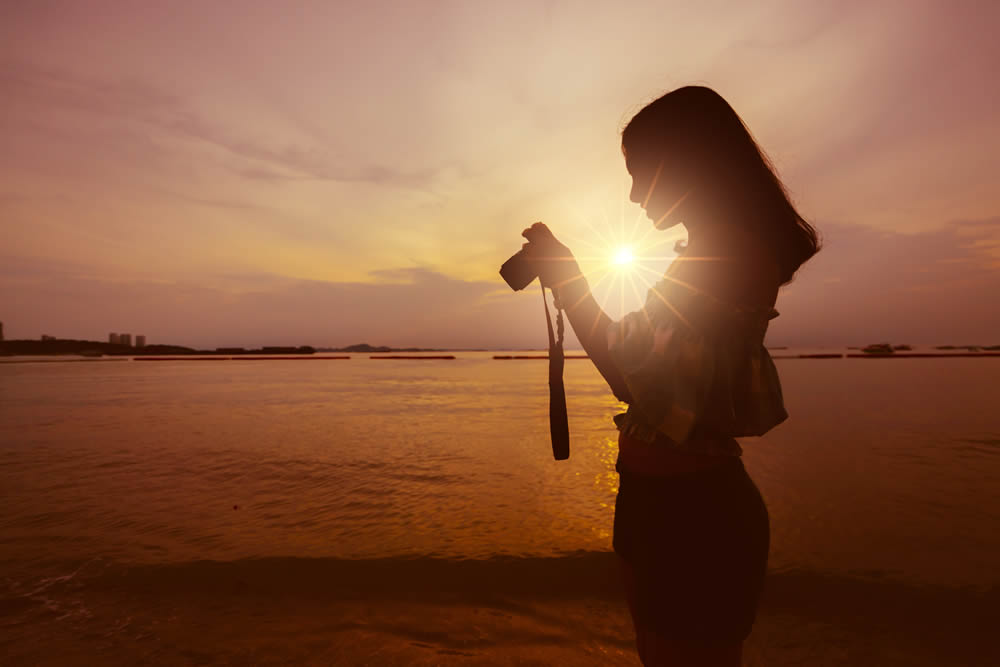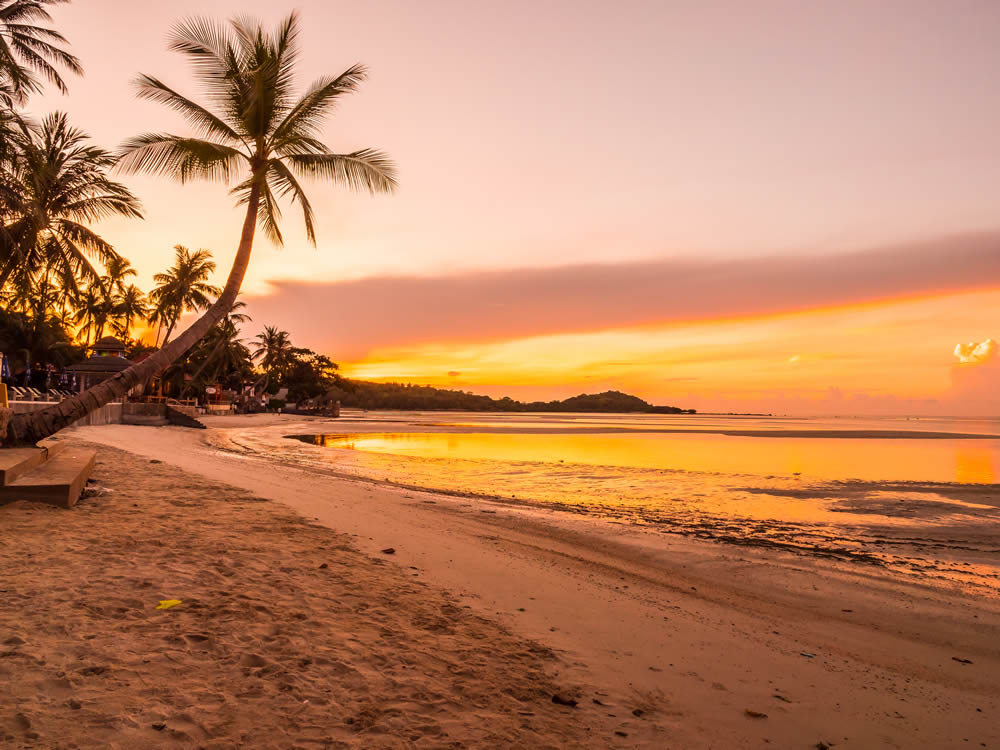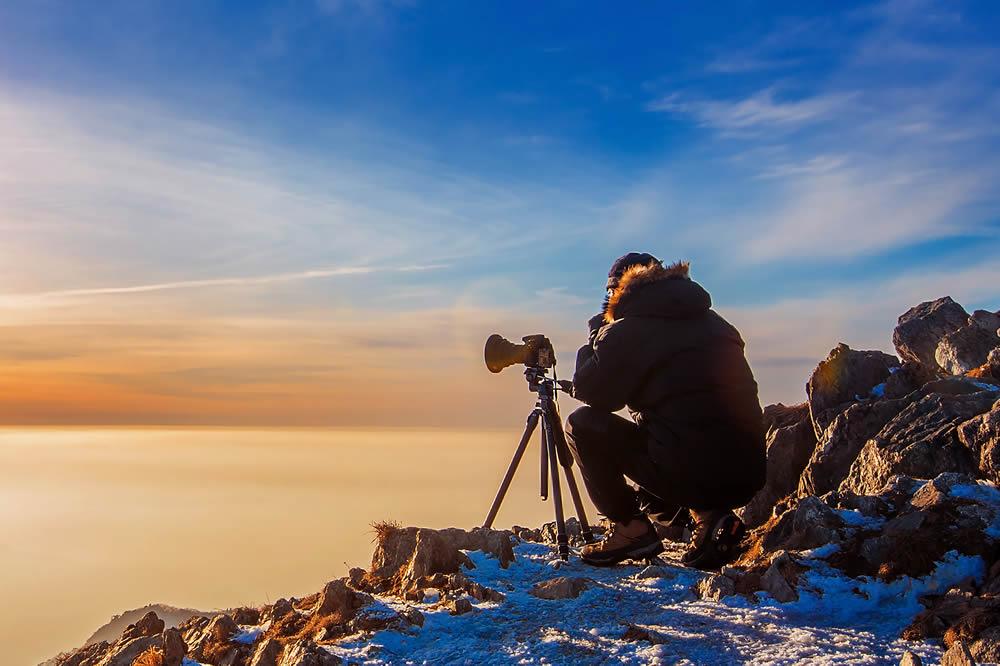There’s a reason why humans flock to the beach so often, deeming it paradise—it’s beautiful! With white, orange, or even black sand meshing with green or blue seafoam against bright blue skies or star-painted nights, there’s no way to go wrong with a beach location. Photographers are known for capturing the most beautiful and intriguing shots at the beach. If you’d like to expand your horizon with beach photography, pros manage it well in a few ways.

Location, Location, Location
You’re going to need the right location for your shot. All beaches have beautiful scenery, but your photography goals in terms of theme and photo may not suit all beaches. Whether you choose the best beaches in Australia or a local lakeshore, make sure the location fits the photo you’re taking. If you’re looking for a beautiful sunset landscape shot, consider all you want to include, from rocky shorelines to tide pools. If you want a melancholy, rainy vibe, you may be better off visiting beaches with darker sand, cloudy skies, and rough waters. The choice is yours!
Lights, Camera…
Consider the lighting of your shot. Beaches have a lot of tricky lighting regarding sunrises, sunsets, clouds, and color contrast between the beach, ocean, and sky. During the daytime, you can use the sun as your own personal studio lighting to highlight the subject of your beach photos. You can also create or utilize natural shadows to better balance between highlights and shadows. You can also use reflectors to play with lighting. If your subject is a person or a moveable object, try different backdrops and lighting to capture that perfect shot.
Golden Hour
Beaches can showcase some of the most beautiful golden hour shots. The ‘golden hour’ refers to the period of sunlight just before sunrise or sunset. If you want a stunning sunrise or sunset shot, the golden hour will give you the best lighting and backdrop. As a bonus, your photo will be less likely to experience overexposure due to muted sunlight, which is common with sunny shots. The golden hour is perfect for shadowy shots or silhouettes, too.

What’s Your Focus?
So, you want to take photos at the beach, mainly because the beach is a beautiful landscape. While this is true, your photography can seem detached or uninspired if you don’t have a specific focus. Choose a theme or inspiration that your camera can focus on. It can be anything on the beach: a silly crab, the horizon, the sunset, a beach chair, a person, the waves, etc. If you’re taking a landscape shot, focus on the intriguing rock formation or how the waves crash onto the shore. If you’re taking photos of a person, they’ll be the main focus, but some shots can focus on a rock or tide pool nearby. Use your imagination and creativity as a photographer.
Sandy Solutions
Beaches, filled with sand and water, aren’t the most friendly to technological equipment, especially cameras. It’s a good idea to bring some cleaning equipment for your lenses and internal camera structures, like cleaning cloths and air dusters to remove sand or salty sea air from your lenses. Even if you don’t drop your camera or get too close to the water, you’d be surprised how much that salty air travels.
Adjust Your Exposure
Many new cameras have automatic exposure settings to help you capture the perfect shot. While these settings can be great, they can easily ruin beach photography. The beach is often a landscape with harsh sunlight, making automatic camera settings ‘over-adjust.’ Consider manually adjusting your exposure to account for sunlight or other lighting conditions.

Prop Your Photography
You can create an entirely new photograph with a simple prop. Consider bringing beach items like an open novel, beach chair, beach ball, seashells, or anything you’d like to focus on in your shot. Adding props can tell a story or enhance a particular theme you’re going for. Adding some simple footsteps in the sand can tell a story. Props can even make landscape photos more intriguing.
Widen the Horizon
Use a wide-angle lens if you’re particularly interested in shooting the beach landscape, especially the horizon. Wide angles allow you to focus on the foreground, which can add incredible depth and detail to your landscape shots. Wide-angle shots are well-known for their ‘widening’ of items in the foreground. These lenses are great for capturing horizons, sandy beaches, shorelines, or waves crashing. Try a wide-angle lens on a wave about to break, and you just might blow your mind.
Seaside Shutter
A lot happens at the beach, and waves can crash in a split second. You may not grab the details you want if you capture these elements with a normal shutter speed. Try slowing your shutter speed down or adjusting to various shutter speeds to capture the angle and vibe you want to create. It may take a few tries, as shutter speed can affect moving objects differently, but you may find the exact result you’re looking for.
Conclusion
Beach photography can be tricky with the wind, fast-moving seas, sand, and sun. No matter your goal or theme on your beach photoshoot, you can capture everything you need with a bit of camera adjusting and preparation. Make sure you choose a focus before getting started. Adjust your shutter speed to capture the vibe you want. Make sure your camera doesn’t automatically overexpose or underexpose your shot. Consider a wide-angle lens for an intriguing frame. Adding props can also make a massive difference in the story you tell.










